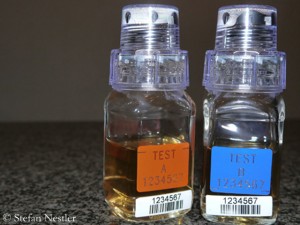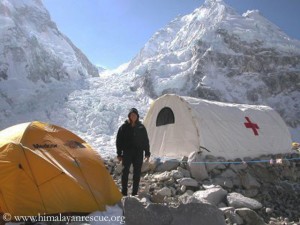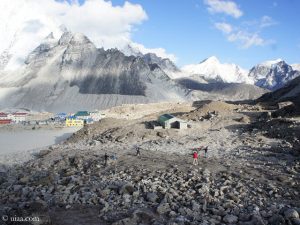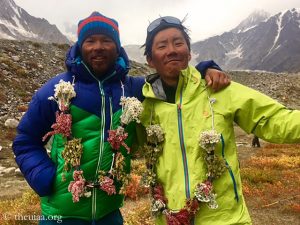Well under drugs is half way up?
 Mountaineering is a sport. And there is – as in other sports – doping. Not the fact is surprising but the extent. “It is common practice,” German Professor Thomas Kuepper tells me. The occupational health and sport physician is working at the University Hospital Aachen. He was one of the authors of the report “Drug use and misuse in mountaineering”, which has been discussed at the General Assembly of the World Federation of Mountaineering and Climbing (UIAA) last week in Flaggstaff in the United States. Kuepper refers to an own study on Kilimanjaro: 80 percent of the summit aspirants used Diamox or Dexamethasone.
Mountaineering is a sport. And there is – as in other sports – doping. Not the fact is surprising but the extent. “It is common practice,” German Professor Thomas Kuepper tells me. The occupational health and sport physician is working at the University Hospital Aachen. He was one of the authors of the report “Drug use and misuse in mountaineering”, which has been discussed at the General Assembly of the World Federation of Mountaineering and Climbing (UIAA) last week in Flaggstaff in the United States. Kuepper refers to an own study on Kilimanjaro: 80 percent of the summit aspirants used Diamox or Dexamethasone.
UIAA avoided the term “doping”
The drug Diamox contains an active ingredient which is able to reduce the intracranial pressure. Many trekkers and climbers take the pills prophylactically against acute mountain sickness. Actually, Dexamethasone is an emergency medication for high altitude cerebral edema, but is also often used preventively. Are the climbers and their doctors just dewy-eyed or do they act negligently? “At least, they break the rules of fair sport,” Kuepper answers. “Since it is strictly doping, even if the UIAA – despite my intensive efforts – was not willing to call a spade a spade.” Above all, the trekking and expedition operators are acting incredible negligently, by urging their clients to take drugs “without any individual benefit-risk analysis”, says Kuepper. “During Everest treks you can regularly hear: Okay, we have some five minutes left, time enough for another coffee and our Diamox pills.”
“Pockets full of drugs”
US doctor Luanne Freer is quoted in the UIAA report. In 2003, she founded the “Everest ER”, the highest infirmary in the world, located in Everest base camp. “We estimate that during our informal survey on Everest spring 2012, at least two thirds of climbers we contacted were prescribed several performance enhancing drugs (PEDs) and had intent to use them not for rescue, but to increase their chances of summit success“, said the 56-year-old physician. One day a commercial guide had asked the ER team to counsel his clients on use of PEDs for summit day. “We were alarmed to find a tent full of anxious climbers with pockets full of prescription drugs (prescribed by their personal physicians and filled at home pharmacies) and with no understanding or instructions on when and how to use them”, said Luanne.
Bottled oxygen on the list
The UIAA Medical Commission has listed drugs that are used by mountaineers and climbers. Among others the list includes oxygen. That caused more debates within the members of the commission than any other section, says the report. That was due to the fact that bottled oxygen is established in high altitude mountaineering and is not regarded as a drug in many countries, explains Professor Kuepper. In addition, there are data showing that the death rates of mountains above 8500 meters were significantly lower for climbers who use supplemental oxygen. “My opinion is: Those who need it, do not belong up there”, says Kuepper. “By definition ‘method that artificially enhances the performance’, it’s doping, because it changes an 8000er to a high 6000er.”
New category?
The UIAA wants to sensitize mountaineers and climbers to the problem of drug misuse. Dangerous interactions that might occur are listed for each active ingredient. However, the report is also an appeal for fair sport, says Thomas Kuepper: “The UIAA is no drug squad. Who really wants to use it, can do it. But then he must also be fair enough to point out after a successful ascent that he has used drugs. There would not only be the difference with/without supplemental oxygen, but as another category with/without drugs.”









